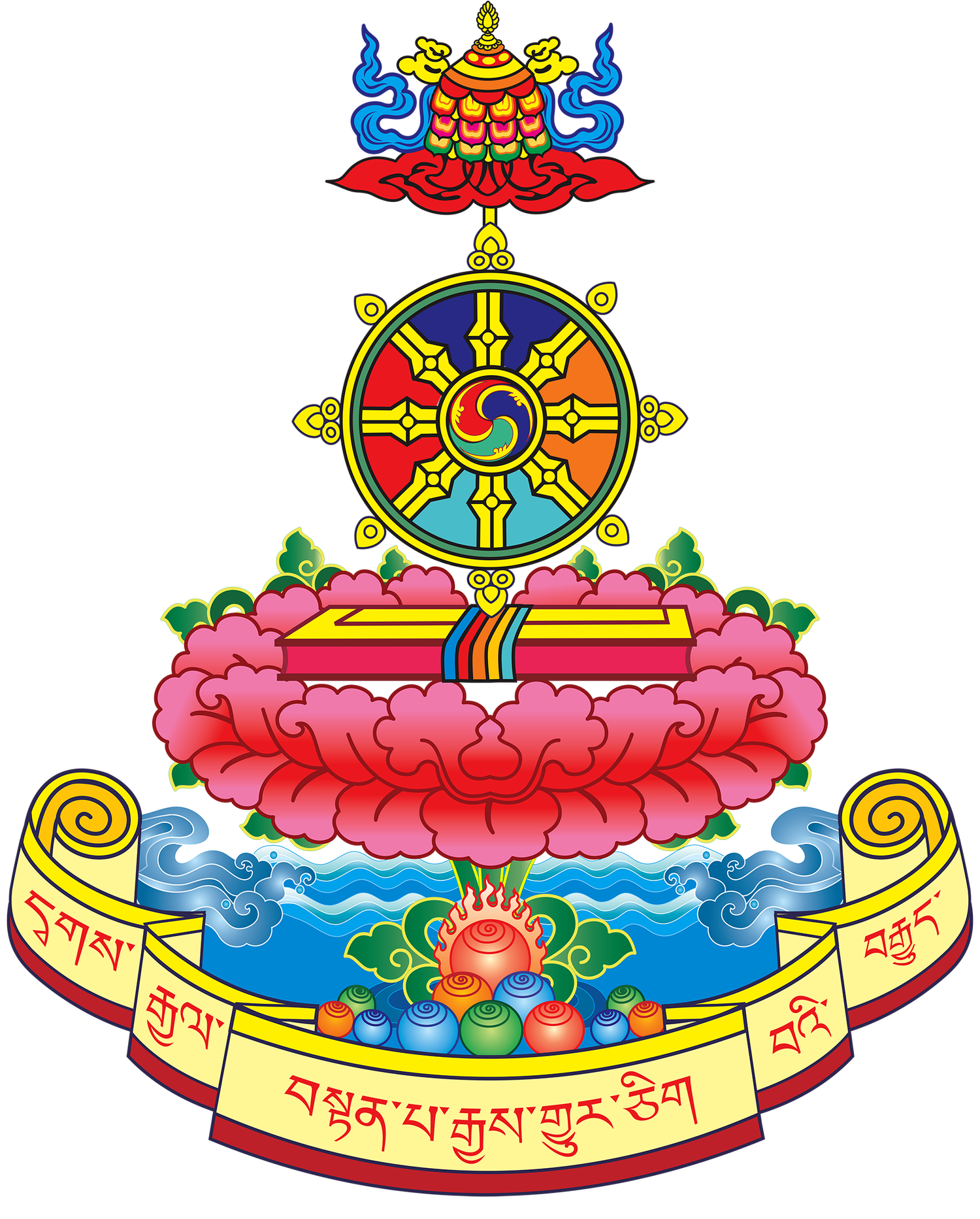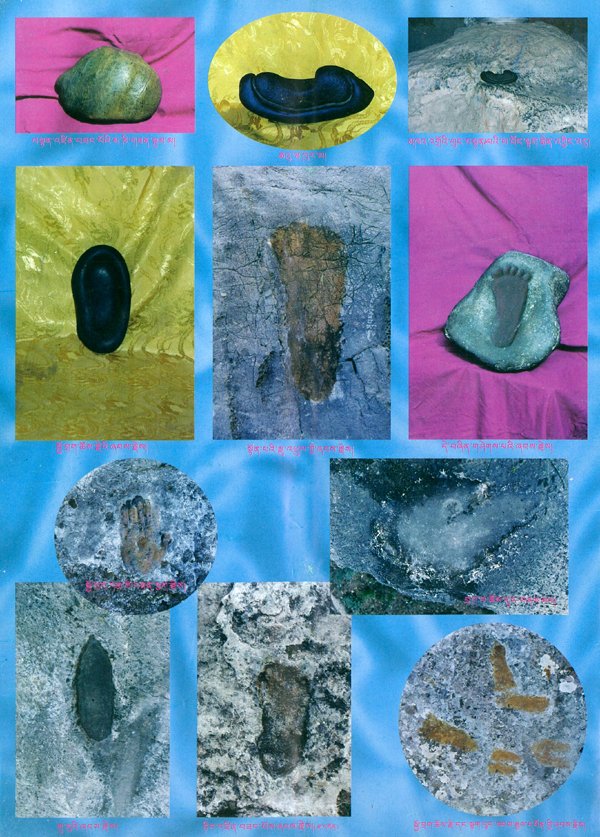Chodrak Monastery
Chodrak Monastery was founded by Venerable Langre Dagpa Gyaltsen, an emanation of Manjushri, in 1361. The monastery is located in the high, pristine province of Kham in east Tibet, in a location chosen by Guru Rinpoche Padmasambhava as a place for retreat and meditation. The monastery adheres to the Barom Kagyu lineage and its first teachers were renowned saints. There are now four main Rinpoches at the monastery – His Eminence Saljey Rinpoche, Tenying Rinpoche, Dhungkar Rinpoche and Aten Phuntsok Rinpoche.
The structure of the monastery is traditional, complete with diverse schools for learning and retreat. At the philosophical institute, Karma Leksheg Ling, monks study the Kangyur and Tengyur, the original teachings of Buddha Sakyamuni and the commentaries of Buddhist masters throughout the centuries. Theksum Choekar Ling is a school dedicated to the study of Marpa Lotsawa’s teachings.
There are several retreat and meditation centres: Zhamo Gon, Sangchub Choeling, Gyalyam Retreat Institute, the Nargong Meditation Institute and Lhundrup Ling, the centre for intensive retreat. There is also a centre for the study of the secret mantra of the Barom Kagyu lineage. In addition to the accommodation and teaching centres for monks and nuns, Chodrak monastery exemplifies the compassionate teachings of the Buddha by supporting Jampa Ling, a traditional medical institute, which is an integral part of the monastery, offering heavily subsidised treatment to those in need.
Chodrak Monastery holds many statues, thangkas and religious artefacts of exquisite beauty and great antiquity. However, it is the precious relics of past spiritual masters that are Chodrak Monastery’s most important treasures. Amongst these are the foot prints, impressed in rock, of Guru Rinpoche Padmasambhava, who is often called the Second Buddha, and of his consort Yeshe Tsogyal who, like Milarepa, gained enlightenment in this life time through her unswerving faith, dedication and devotion to spiritual practice.
The great sages of Chodrak Monastery attained the most profound perception by persistent effort, great compassion and purity of heart. Having gained pure and accurate perception of appearances as insubstantial and devoid of substance, they have, in their compassion, left a lasting testimony of their spiritual accomplishments, tangible evidence of the Buddha’s teaching as inspiration to ordinary practitioners, whose perception is clouded by the veils of karma. As Khenchen Thrangu Rinpoche has explained, the display of miracles, such as leaving imprints in rocks, arises from the samadhi (a state of meditation that is non-dualistic in that it does not differentiate between self and other) that all phenomena are uncreated and are, in fact, illusory. Whatever is required to benefit beings can be magically manifested out of the samadhi realising this emptiness.
Clockwise, below, are images attesting to these extraordinary accomplishments:
A stone, carried by Tenzin Zangpo in his sen (monk’s robe), upon which appeared Chenrezig’s mantra, a footprint of Chodrak Monastery’s founder, Venerable Langre Dagpa Gyaltsen, hand and foot prints of the Great Master Chodrak Choje and Chodrak Karma Tseten , Guru Rinpoche’s footprint and the foot and hand prints of Tak Long Sangye and Tang Zangpo.
Chodrak Monastery continues to be blessed with teachers and yogis whose realisations are very pure. Having renounced all worldly pleasure and gain, they bring tremendous benefit not only to Buddhist practitioners but to the whole world.
Venerable Yeshe Rabje and Venerable Chadral Tsultrim Tarchen at Barom Dharma Wangchuk’s first monastery. Both are considered living saints.
The monastery has great concern for both the spiritual and physical wellbeing of the community. It runs a discount store so that poor people who cannot afford to buy goods at regular prices can do so at a discounted price, and also maintains a large hospital for the neighbouring counties, offering Chinese and Tibetan medical treatments. Chodrak Monastery is also a focal point for annual festivities and celebrations, such as Losar, Tibetan New Year. Ceremonies such as those offered on the 10th of each month for Guru Rinpoche are famous in the region and well attended by the community.
Among the most popular events are the Cham performances, commonly referred to in the west as lama dancing. This Vajrayana tradition was revealed by the 8th century tantric master, Guru Rinpoche. He used Cham as a method of subduing powerful demons of the Tibetan region. He appears in an extremely wrathful form with fearsome sounds, using his perfect wisdom and awareness to transform all negativities in beings and their environment. Cham is not an ordinary form of entertainment. It is a spiritual practice that the dancer undertakes as meditation, relying on the blessings of the lineage in order to generate bodhicitta and liberate beings from the suffering of samsara.
In Tibet, it is considered very sacred and is thought to bring good luck to those who view it. Practitioners attend the day- long dance ceremonies, believing in the power of the dance to remove obstacles and bestow blessings upon those who witness them. The brightly coloured masks and costumes are worn to assist ordinary people in the audience to visualise the tantric deities which the Cham dancers embody and intensify their experience.
Both the lamas Chodrak Monastery and the nuns of Chodrak Dechencholing Nunnery participate in the Cham performances at the annual Barom Kagyu Chodrak Monlam.
The monks at Chodrak Monastery evoke peaceful and wrathful deities during Cham.








